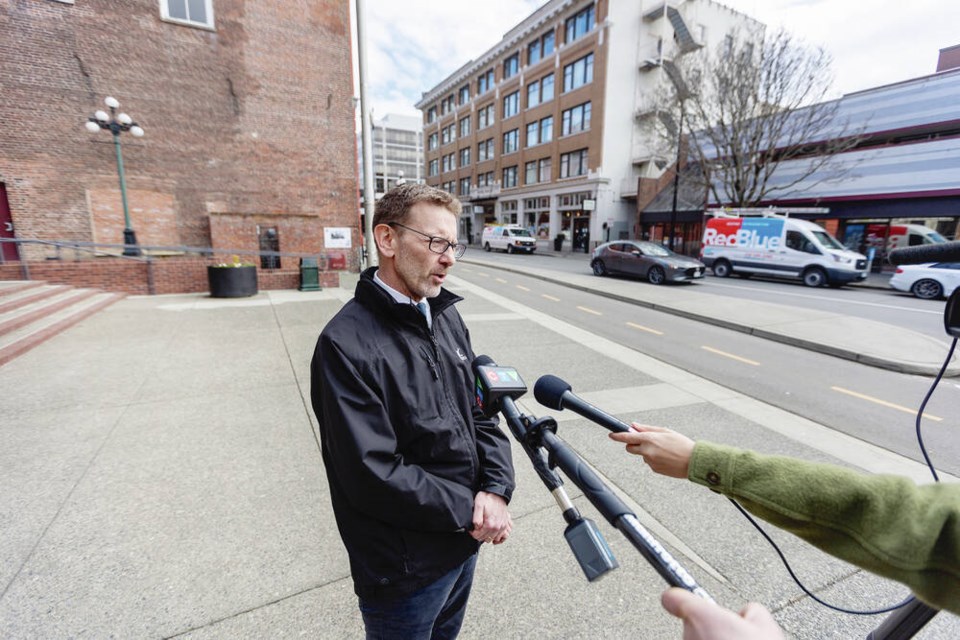The City of Victoria has gone high-tech to eradicate, or at least fill in, the scourge of drivers everywhere — the pothole.
With extreme heat more common and more heavy equipment travelling on the city’s streets, potholes have become more common, spurring the city to run a pilot project with new technology to tackle the problem.
The city has a new device mounted to one of its vehicles that uses software to scan the road, find potholes, measure them and test their depth.
Philip Bellefontaine, director of engineering and public works, said the city is nearing the end of a six-month pilot project and so far, it likes what it sees.
“It’s been very positive. The value to us is starting to show itself in terms of efficiencies in terms of the ability for us to schedule crews efficiently and systematically,” he said, noting the device not only counts the number of potholes but can triage them and identify which ones need to be dealt with immediately and which can wait.
That’s a significant upgrade from the previous system, which relied heavily on public feedback and work crews seeing potholes and fixing them while they drove around.
“This gives us that ability to go and look and know where they all are. We know where one street might have several potholes, so we can do them all at once and we’ll know whether one pothole is more severe than another one and where there are more severe implications from a road-safety perspective,” he said. “It’s a very valuable tool to do things efficiently.”
It’s also getting plenty of use.
Every year, the city paves about two kilometres of its 279 kilometres of road, and Bellefontaine said budgets for patching and pothole filling are on the rise.
Last year, the city spent $800,000 to fix and repair streets, including filling 2,500 potholes.
“That’s not the repaving, that’s just maintenance-type work. Patching, crack-sealing and potholes,” he said.
Bellefontaine said some of that is due to extreme-weather events where water freezes and thaws on the roads, weakening the asphalt, which can then crack under the weight of moving traffic.
“We are seeing an increase in the stresses on our roads,” he said.
The rapid pace of development in the region is also a factor, with heavy equipment moving around the city to service new projects.
Bellefontaine said it’s not uncommon to see roads showing stress around major developments.
“We do know that a major construction site where there are multiple heavy trucks coming and going does accelerate the deterioration of a road,” he said, though he noted developers are obligated to repair their frontage and pave up to the middle of the road when they are finished.
The city undertakes road-condition assessments every three years, while all paved roads are monitored and assessed year-round to prioritize upgrades, repairs and replacements.
>>> To comment on this article, write a letter to the editor: [email protected]



